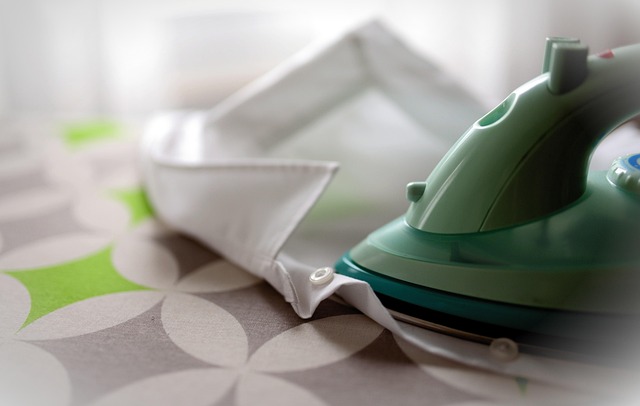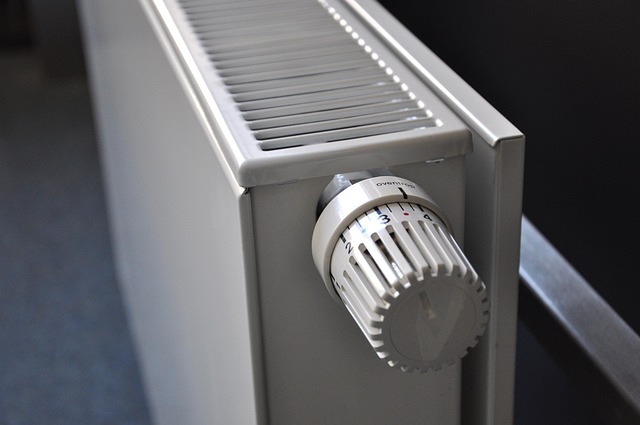Regular radiator bleeding service is crucial for maintaining optimal car and home heating efficiency. Air bubbles in cooling systems reduce performance, so opening bleeder valves releases trapped air. Recommended every 2-3 years or when cooling issues arise. Neglecting this maintenance causes hot spots, reduced efficiency, and potential engine damage. Professional services use advanced equipment to detect subtle issues, ensuring peak system performance and preventing costly repairs. Eco-friendly practices, like regular bleeding, smart thermostats, and door closure, further enhance energy efficiency.
Unleash the secrets to a cozy home with our comprehensive guide on top-secret tips for efficient heating. From understanding the intricacies of a radiator bleeding service to mastering advanced maintenance techniques, this article covers it all. Learn why regular radiator bleeding is crucial for optimal performance and energy savings. Discover common mistakes to avoid and eco-friendly practices that will revolutionize your heating experience. Get ready to transform your home’s temperature control.
- Understanding Radiator Bleeding Service: A Basic Guide
- The Importance of Regular Maintenance for Heating Systems
- Step-by-Step Process for Efficient Radiator Bleeding
- Common Mistakes to Avoid During Radiator Maintenance
- Advanced Tips for Optimal Heating Efficiency
- Eco-Friendly Practices for Energy-Saving Heating
Understanding Radiator Bleeding Service: A Basic Guide

Many vehicle owners overlook the importance of a regular radiator bleeding service, which can significantly impact their car’s performance and fuel efficiency. This process involves removing air bubbles from your car’s cooling system, ensuring optimal heat transfer and preventing overheating. The build-up of air in the radiators can cause hot spots, leading to reduced heating efficiency and even damage to the engine over time.
During a radiator bleeding service, mechanics carefully open the bleeder valves under the bonnet (or ‘bleed underbonnet radiators’) to release trapped air. This is typically done in conjunction with a pressure pump that forces fresh coolant through the system. The frequency of this process depends on various factors, including driving conditions and climate, but as a general guideline, it’s recommended that car owners consider bleeding their radiator every 2-3 years or when there are signs of reduced cooling performance, such as an overheating engine or fogged-up headlights at night. Regular maintenance of the car’s cooling system is key to keeping your vehicle running smoothly and efficiently all year round.
The Importance of Regular Maintenance for Heating Systems

Regular maintenance is key to keeping your heating system running smoothly and efficiently. Over time, heating systems can accumulate debris and air pockets, which hinders their ability to heat your space effectively. One crucial service to consider is radiator bleeding. This process involves removing trapped air from the radiators, ensuring optimal heat distribution throughout your home or building. By scheduling regular radiator bleeding services, you’re not only enhancing energy efficiency but also prolonging the lifespan of your heating system.
A well-maintained heating system, including proper car cooling system maintenance and underbonnet radiator bleeders (local radiator bleeder services), can significantly reduce energy consumption and lower your utility bills. In addition to these benefits, regular care can prevent costly breakdowns and ensure consistent comfort during colder months. It’s a smart investment for any property owner looking to maintain a cozy living environment while being mindful of their energy expenses.
Step-by-Step Process for Efficient Radiator Bleeding

Radiator bleeding is a crucial maintenance task that ensures your heating system runs efficiently and effectively. Here’s a straightforward, step-by-step guide for achieving this essential process known as radiator bleeding service. Begin by turning off the main heating control to prevent any accidental activation during the procedure. Next, locate the bleeder valve on each radiator—it’s usually at one end of the unit. Place a bucket or container underneath to catch any excess fluid. Slowly open the bleeder valve by turning it counterclockwise until you hear a hissing sound and see air being released, indicating that air has been removed from the system. Once this occurs, quickly close the valve and allow pressure to build up for about 30 seconds. Repeat this process on each radiator in your property. After all radiators have been bled, restart the main heating control and monitor the system’s performance. If any issues arise, consider seeking professional assistance for a thorough inspection and top-up of radiator fluid if necessary, following the how to top up radiator fluid guide for optimal results.
Common Mistakes to Avoid During Radiator Maintenance

Many homeowners make simple but avoidable mistakes when it comes to radiator maintenance, which can lead to inefficient heating and costly repairs. One common blunder is neglecting regular radiator bleeding services. Over time, air can get trapped in the system, reducing its efficiency and causing hot spots in radiators. A qualified technician performs a coolant system flushing process during a radiator bleeding service to remove any trapped air bubbles, ensuring optimal heat distribution.
Another mistake is assuming that occasional how to bleed a radiator checks are sufficient. While it’s a good practice to check for leaks and ensure the system is functioning correctly, a thorough radiator bleeding service involves more than just addressing visible issues. Professional technicians use specialized equipment to detect and rectify subtle problems, guaranteeing your heating system runs smoothly and efficiently all season long.
Advanced Tips for Optimal Heating Efficiency

Maintaining optimal heating efficiency isn’t just about setting the right temperature; it involves a series of advanced tips that can significantly reduce energy consumption and costs. One such crucial technique is regular radiator bleeding. Over time, radiators can accumulate air bubbles, which hinder efficient heat distribution. A simple yet effective solution is to perform a radiator bleeding service, eliminating air pockets for better performance. This process ensures your heating system operates at peak efficiency, distributing heat evenly throughout your space.
For homeowners seeking DIY solutions, DIY radiator recirculation can be a helpful approach. By manually recirculating the heating system’s water flow, you can force out trapped air. However, for best results and safety, it’s often recommended to consult an emergency plumber Bromsgrove. They possess the expertise and tools to handle complex issues, guaranteeing your system functions optimally and securely.
Eco-Friendly Practices for Energy-Saving Heating

Adopting eco-friendly practices can significantly contribute to energy savings and create a more sustainable home environment when it comes to heating systems. One effective strategy is regular maintenance, such as a radiator bleeding service. This process involves removing air bubbles from the system, ensuring optimal heat transfer. By addressing issues like a radiator cap not sealing or even an antifreeze leak, you can prevent energy wastage and improve overall efficiency.
Additionally, using smart thermostats and programming them to adjust temperatures based on occupancy can further enhance energy savings. Encouraging residents or family members to practice simple habits, such as closing doors to unheated areas and using heavy curtains to insulate windows during colder months, complements these efforts. These measures collectively promote a greener approach to heating while reducing utility bills.
Efficient heating isn’t just about saving energy; it’s about ensuring your home stays comfortable while preserving the lifespan of your heating systems. Regularly understanding and performing tasks like radiator bleeding service, along with basic maintenance and eco-friendly practices, can significantly enhance both comfort and energy efficiency. By implementing these top-secret tips, you’ll not only reduce energy costs but also contribute to a greener planet. Remember, knowledge is power – especially when it comes to optimizing your home’s heating system.
